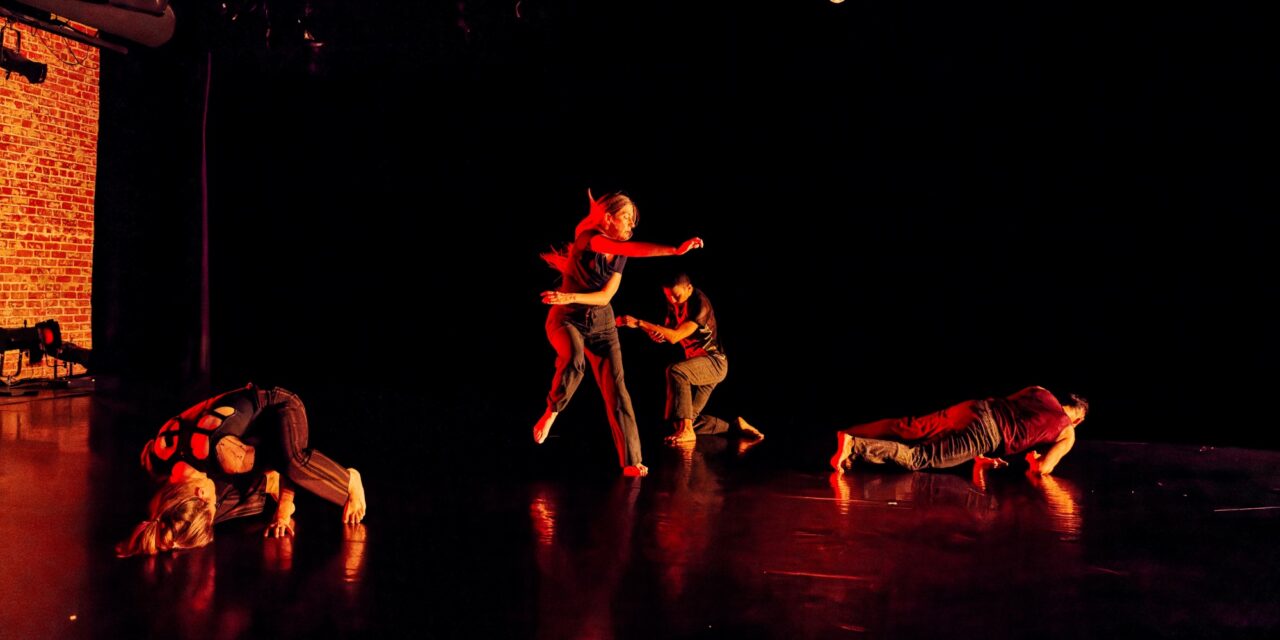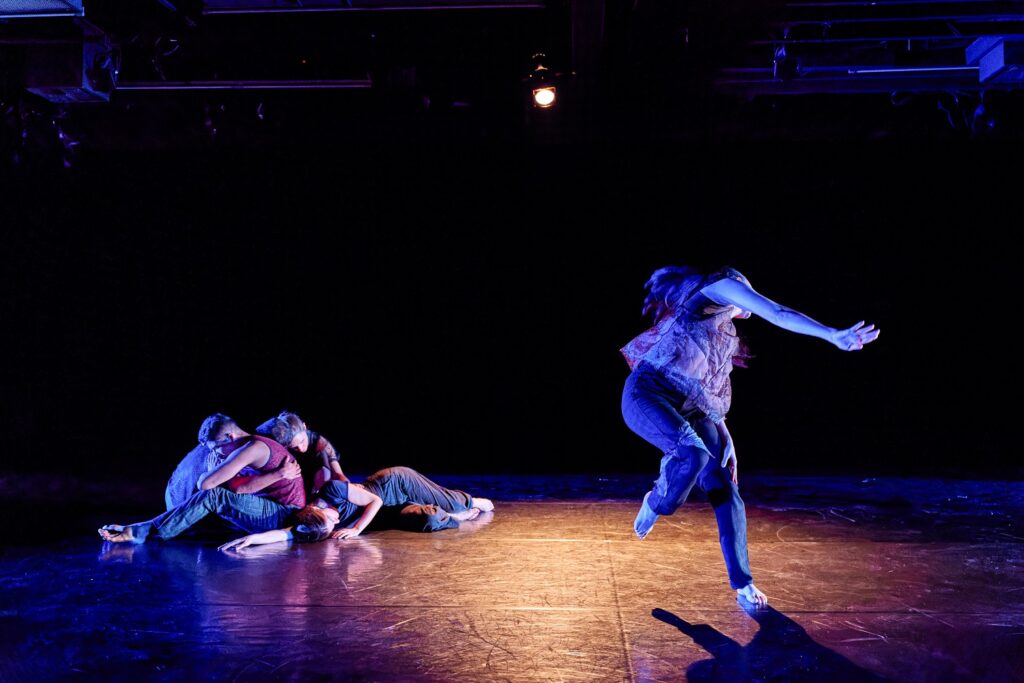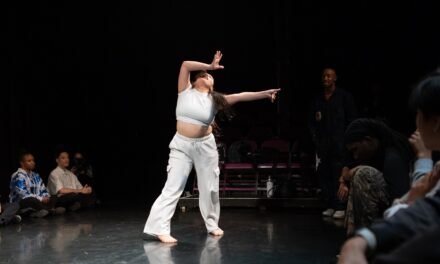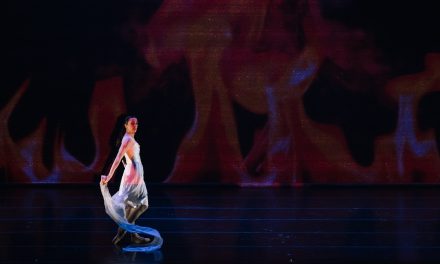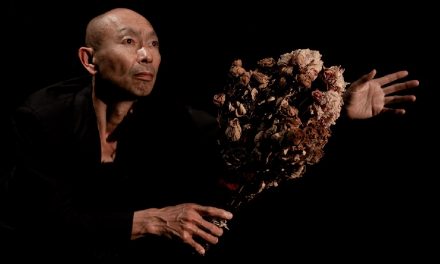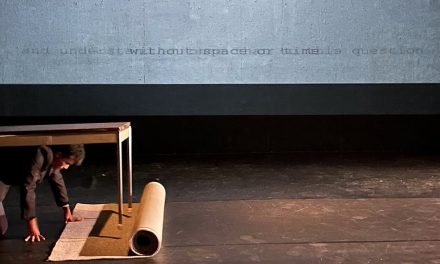Deborah Rosen and Dancers delivered their paean to mental health and the emotions one encounters while navigating the vicissitudes of daily life in their new work, FRAG m e n t e d at ARC Space in Pasadena. Program notes state that this piece “explores elements of mental health, motions confined within and discovering their expression through the body.” Throughout the movement there were relationships established and dissolved with the requisite emotional ups and downs displayed by the performers. The juxtaposition between the bodies in the group versus the individual was very much on view with communal acceptance or ostracism close behind. This was Rosen exploring the condition of the individual within themselves and also in the company of a group. Also illuminated was the price paid in emotional need and stability of mind in order to deal with being an individual and belonging to a group, and how those two states of being are often in conflict. “Fragmented” = existing or functioning as though broken into separate parts; disorganized, disunited: a fragmented society. Music by Dustin O’Halloran & Hauschka, Hayden Thorpe and Ranko Ŝajfar was perfectly suited to the broken aspect of the piece and separated the different sections well.
Consequently, this piece was also a commentary on today’s society writ large. To what degree can any individual live in a society where the group must operate and still maintain their own individual beliefs and desires? This piece had many branches of double duets in counterpoint with a solo figure who at times blended beautifully with the group only to break into fitful solo movements when the group no longer suited. This is nothing new in Human society, however today’s headlines offer a unique and sometimes deadly conflict between the individual and their group. One only has to think of Social Media, Corporate greed, Government corruption, and of course mass shootings in order to fully appreciate how fragmented a society can be. FRAG m e n t e d encapsulates the broken aspect of human relationships dealing with the individuals’ needs and their survival instinct to belong. The dancers: José Argueta, Natalie Bojorquez, Diane Hula, Thomas Ng, and Sara Scrimshaw all delivered on this topic.
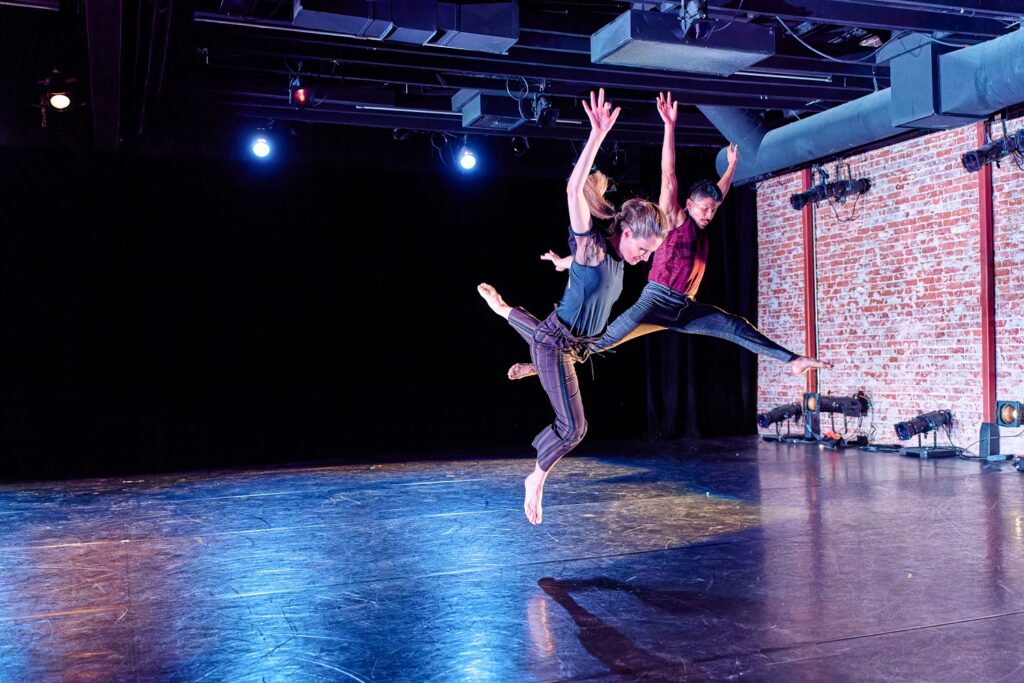
Deborah Rosen and Dancers – Sara Scrimshaw (front) and José Argueta in “FRAG mented” – Photo by George Simian
Anon was a solo for the expressive Wendy Andronika Samuels on loan from Seattle, Washington. Her large encompassing movements devoured the space and offset her small gestures and intimate moments wonderfully. She began facing upstage where there were placed three empty chairs. These seemed to represent past, present, and future depending on how she utilized them during her solo. She first sat in the middle chair and then incorporated the other two in reflected, softened poses and gesture. There was regret and promise and finally acceptance in her manner. The lighting here was exceptional as there played upon the walls of the space huge shadows of the performer further developing the past and future aspects of her solo. Lighting by Benedict Conran throughout the evening was beautiful and perfectly offset the emotional state of the dancers in saturated blues or reds, soft ambers then sometimes cold whites making the skin tones pop in front of a black backdrop. It was specific, painterly and displayed the performers from soft, giving flesh to cold, hardened alabaster.
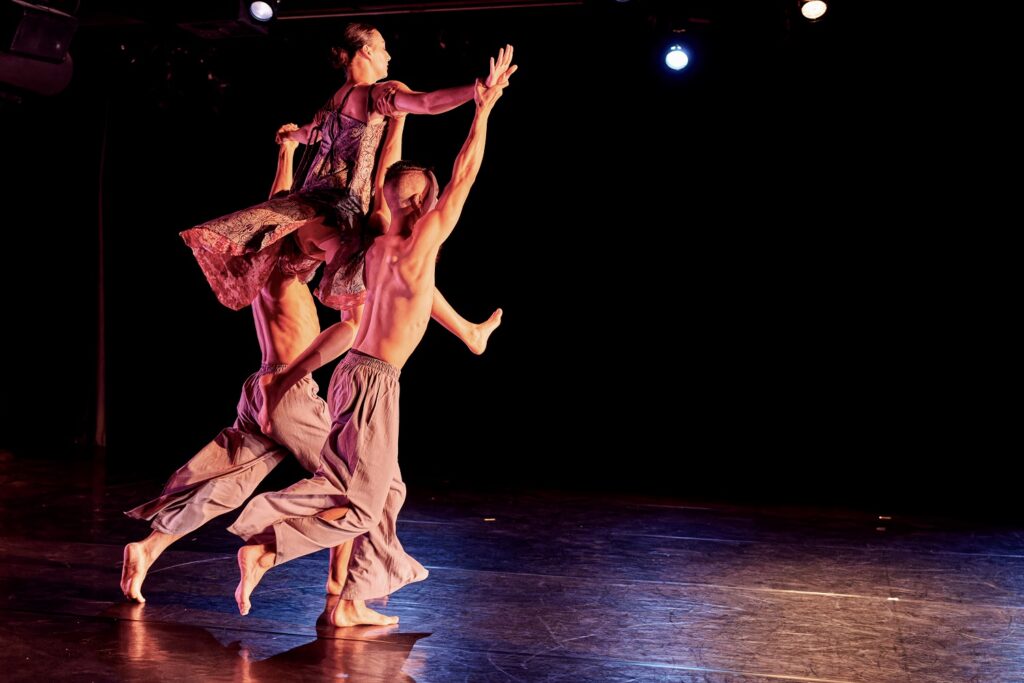
Robert Huerta, Natalie Bojorquez, and Thomas Ng in “Les Moulins de Mon Coeur”, choreography by Jamie Nicols – Photo By George Simian.
Choreographer Jamie Nichols then presented Les Moulins de Mon Coeur set to music by Dimitri Shostakovich and the song of the same title by Michel Legrand. The dancers enter with single lit candles consecrating the space for a ritual or spiritual communion. This was followed by a contemplative and somber theme in the movement through unison, lovely partnering and lifts, and breakout solos all centered on the four dancers’ care and response to each other. The dancers, Natalie Bojorquez, Sara Scrimshaw, and Thomas Ng remained in somber mode for the duration of the piece with one dancer making an exception. This was Robert Huerta who could not seem to help himself from breaking into a smile at various points in the dance, so infused was he with joy in the simple act of physically dancing and through movement, communing with his colleagues. This broke a certain distanced reserve in the performing of choreography and brought home the sheer humanity of a body exulting in its capability of physical movement. Thank you Robert Huerta – sometimes I believe the sheer animal joy of being human and existing in the physical world is lost while trying to send home a message of social justice, political discontent or cultural adversity. Walk past any Kindergarten playground and you will see unadulterated joy in being able to move.
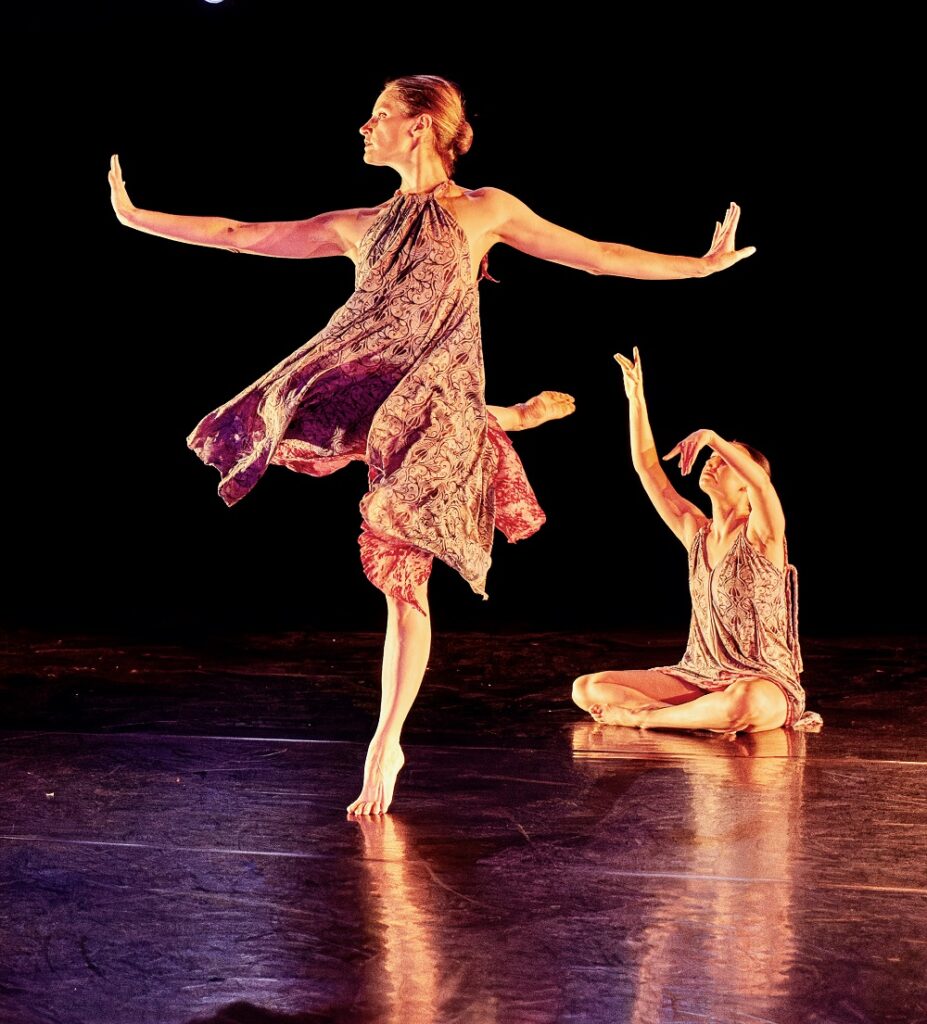
Sara Scrimshaw and Natalie Bojorquez in “Les Moulins de Mon Coeur”, choreography by Jamie Nicols – Photo by George Simian.
There was a musical interlude of two improvised pieces in the program performed on guitar by Steven Woodruff which was a welcome respite from the emotional movement hitherto. This gave the audience a break to digest what had been seen before and soothed them for what was to come. The first piece was ‘after’ Django Reinhardt and the second, Astor Piazzolla.
Ending the evening was a duet by José Argueta who was also one of the dancers of the evening and a very powerful mover easily commanding the space. His piece, Fixation was just that, as he focuses on his partner, Natalie Bojorquez and does not let her out of his sphere of influence physically for the whole dance. Although the program notes state that events in any relationship such as conflict, betrayal, reconciliation and acceptance are being depicted in the duet, it also falls under the heading of obsessive, controlling, abusive and coercive. But ‘a rose by any other name’ fits here. The movement was dynamic and performed well. It reminded me of those couples who cannot keep their hands off of each other but should not be together as their passion utterly destroys them both.
The space at ARC (A Room to Create) Pasadena is intimate and ideally suited to seeing dance and any other physical Art. The mission of ARC is to support and nurture an appreciation of dance by providing a state-of-the-art facility for dancers, choreographers, teachers, lecturers, and dance enthusiasts. ARC Pasadena also serves as the headquarters for the Pennington Dance Group headed by John Pennington.
For more information about Deborah Rosen and Dancers, please click HERE.
Written by Brian Fretté for LA Dance Chronicle.
Featured image: Deborah Rosen and Dancers in Rosen’s FRAG m e n t e d – Photo by George Simian.

